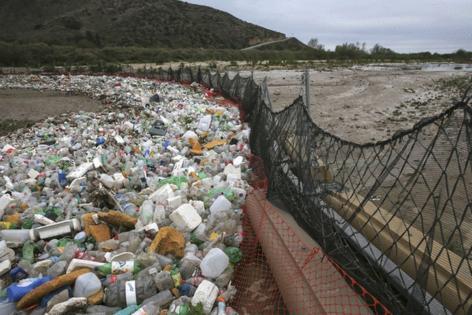Supervisors request Tijuana River study aimed at convincing EPA to declare Superfund site
Published in Science & Technology News
SAN DIEGO — If at first you don’t succeed, try again.
That’s the philosophy of two Democrats on the San Diego County Board of Supervisors when it comes to securing Superfund status for the Tijuana River Valley.
Earlier this year, the U.S. Environmental Protection Agency declined to investigate pollution in the area. The decision came in response to a petition from Supervisor Terra Lawson-Remer, who made the request after her colleagues declined to get the county to sign on to the effort. The EPA later declined to revisit the denial.
But now, supervisors are a united front in early efforts aimed at getting the EPA to declare the polluted river valley a Superfund site, the latest development in an ongoing effort to get county government more involved in mitigating the sewage crisis that has plagued South County for years.
To bolster their case to the federal government, supervisors want to commission a two-year study to probe the extent of contamination in the river.
In January, the EPA under the Biden administration declined to take a harder look at the river, citing limited data from more than six years ago — the most recent available — that did not indicate hazardous chemicals at levels considered dangerous to human health.
But the impacts of the pollution have worsened in recent years.
A recent peer-reviewed study found that the river is polluting the air with alarming levels of hydrogen sulfide, but the waterway itself has not gotten the same scrutiny.
Lawson-Remer and Supervisor Paloma Aguirre, who has made the sewage crisis a top priority, hope the results of a fresh look at contamination in the river could get the EPA to reconsider its stance.
“We cannot sit idly by while being rejected in our pleas for help from the federal government,” Lawson-Remer said at a press conference on Tuesday. “We must compel the EPA to act.”
On Tuesday, supervisors voted unanimously to ask the San Diego Regional Water Quality Control Board for $1.4 million to fund such a study. That money comes from the state and is earmarked for environmental cleanup projects.
The water quality board did not return a request for comment on Tuesday.
Last month, Supervisor Paloma Aguirre pushed the board to task an ad-hoc subcommittee with identifying options for an epidemiological study on the sewage’s public health impacts. The subcommittee must also find ways to fund that study and a separate one on how the sewage impacts the South Bay’s economy.
At Tuesday’s press conference, Aguirre pushed back on the idea that there’s already been enough study of the sewage crisis and its impacts.
“This study is more than just data collection,” Aguirre said. “We hear this all the time. ‘Why another study? Why another study?’ Nobody has done a comprehensive soil study on the Tijuana River Valley. That is unbelievable.”
Superfund status for the river valley could unleash federal spending to help clean up the pollution.
Efforts are ongoing between the governments of the United States and Mexico to upgrade infrastructure around the river to treat sewage and divert it from entering the river.
In the past, other waterways in the United States have been designated Superfund sites under circumstances similar to the river valley.
The Upper Columbia River in Washington, contaminated with industrial waste flowing downstream from Canada, received Superfund status last year.
The Gowanus Canal in New York City got Superfund status in 2010 after being contaminated with raw sewage and industrial waste for more than a century.
©2025 The San Diego Union-Tribune. Visit sandiegouniontribune.com. Distributed by Tribune Content Agency, LLC.







Comments